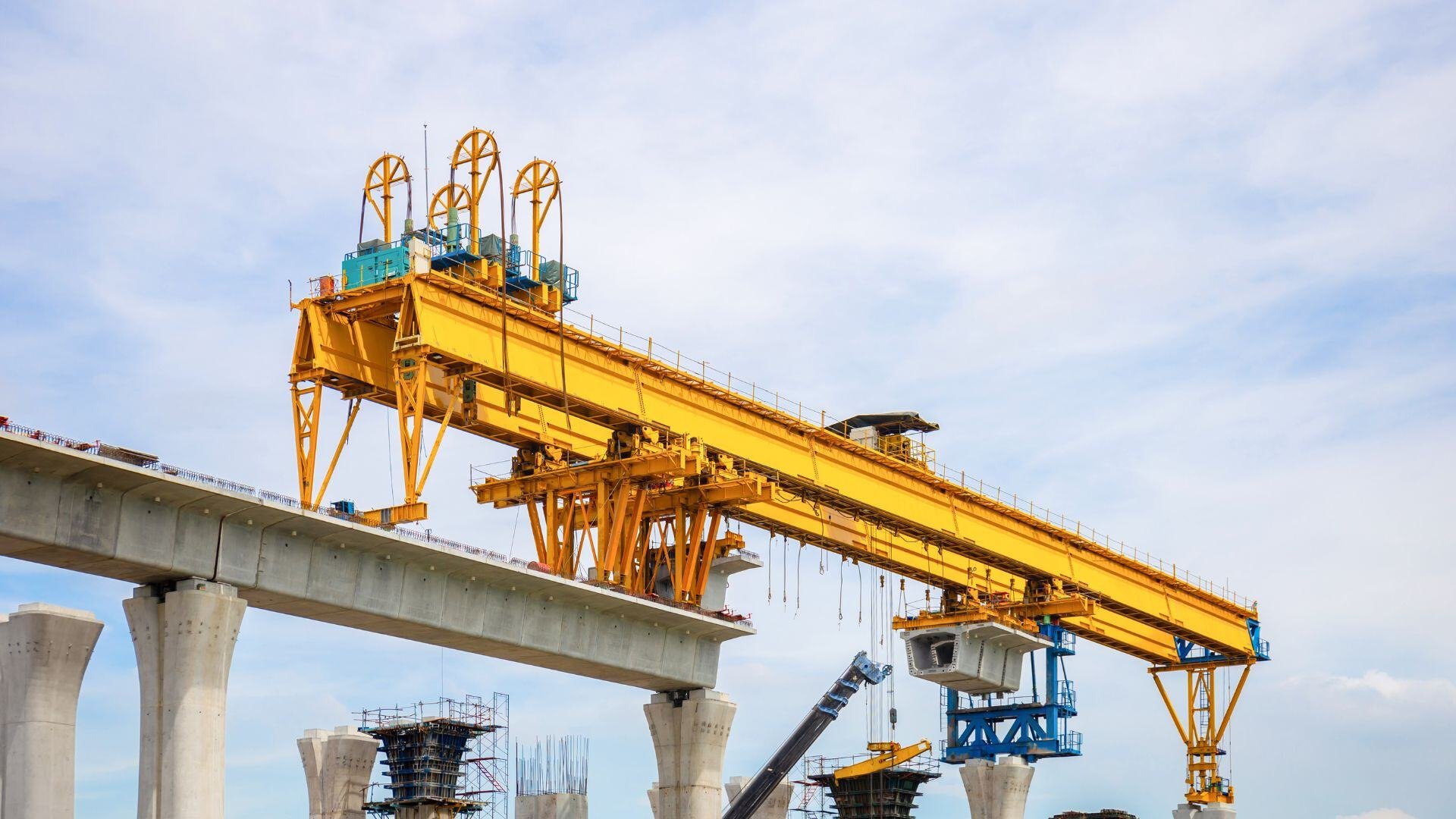
AI Construction Project Scheduling Software
What is Generative Scheduling?
Construction schedules break when they aren’t built to adapt. You need a platform that lets you simulate scheduling scenarios, reduce risk, and optimize your plan.
Transform Construction Project Outcomes with ALICE
Minimize Risks
Identify potential issues early, test numerous scenarios, and generate resilient schedules for your project.
Protect Revenue + Margins
Avoid costly surprises by aligning cost, crew, and schedule—turning contingency into profit, not overhead.
Optimize for Efficiency
Simulate smarter build strategies to accelerate delivery, right-size resources, and unlock new project capacity.
Generative Construction Project Scheduling Software
Built on AI and simulation, ALICE software empowers teams to optimize critical paths, resources, sequences, and schedules—while proactively mitigating risk through optioneering. But how does it work in practice? Scroll further to explore ALICE’s core features and how they support smarter planning and scheduling.
Traditional scheduling can’t keep up with change. ALICE simulates millions of construction scenarios—helping you find the best path forward that aligns with your goals.
- Import your schedule
- Make your schedule flexible
- Run AI-driven what-ifs: ALICE simulates millions of possible scheduling paths per scenario
- Export the best plan, or let ALICE explore new ones
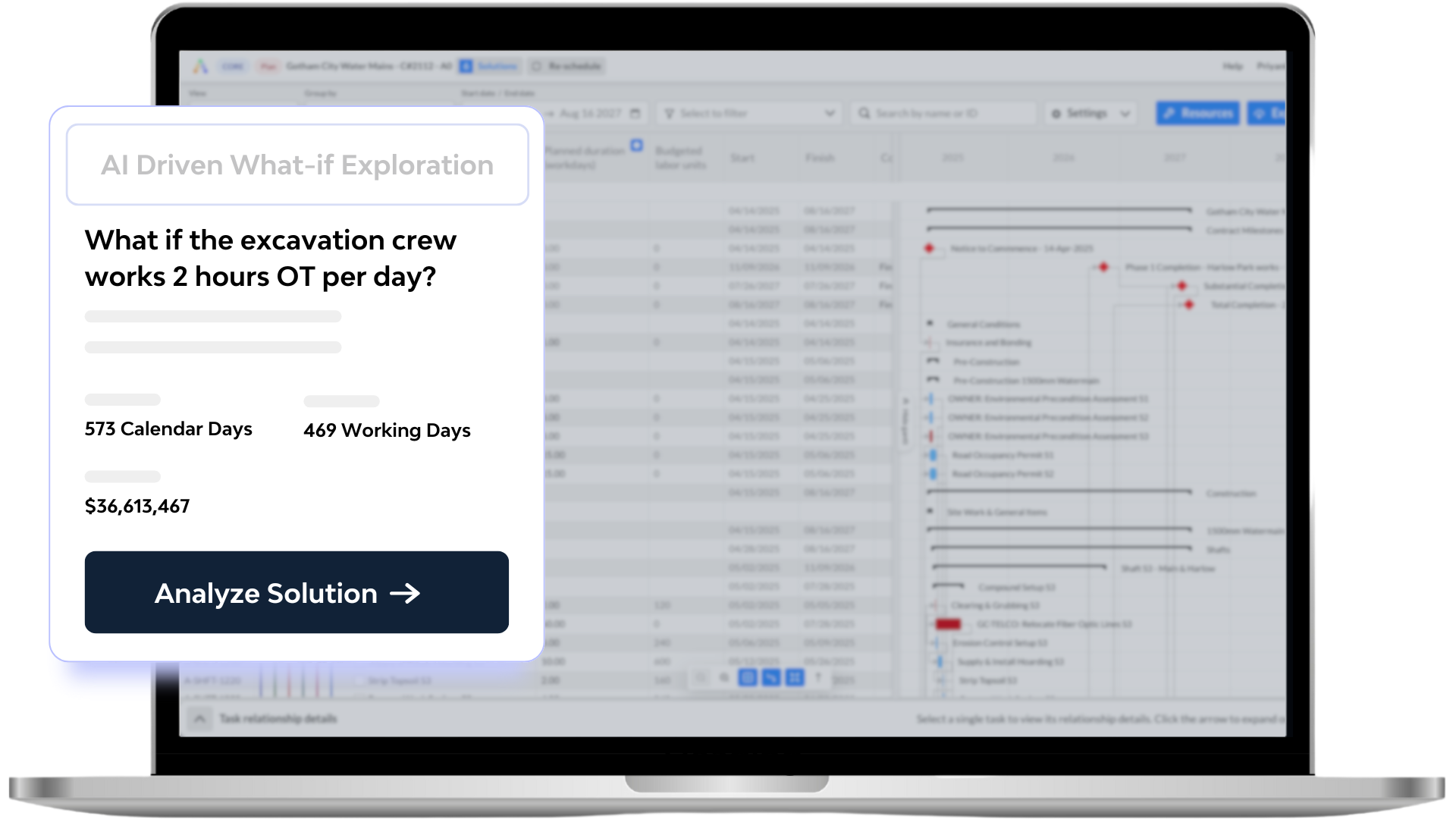
Most scheduling tools make your job harder. ALICE gives you the power of advanced algorithms—wrapped in an interface that’s intuitive, fast, and built for construction teams.
Get a demo


Schedule
Sync
Merge scope changes and schedule updates with Schedule Sync.

Optimization Objectives

Automatic Cycle Detection
ALICE automatically detects logic loops that compromise your construction schedule’s integrity.

Custom Visualizations
View schedule scenarios on interactive charts with configurable cost-time axes.

Gantt
Overlay
Compare optimized plans against baseline schedules by overlaying one schedule over the other.
Each ALICE-generated schedule comes with a built-in dashboard of reports to help you visualize time and cost impacts of every decision and strategy you explore.
Get a demo
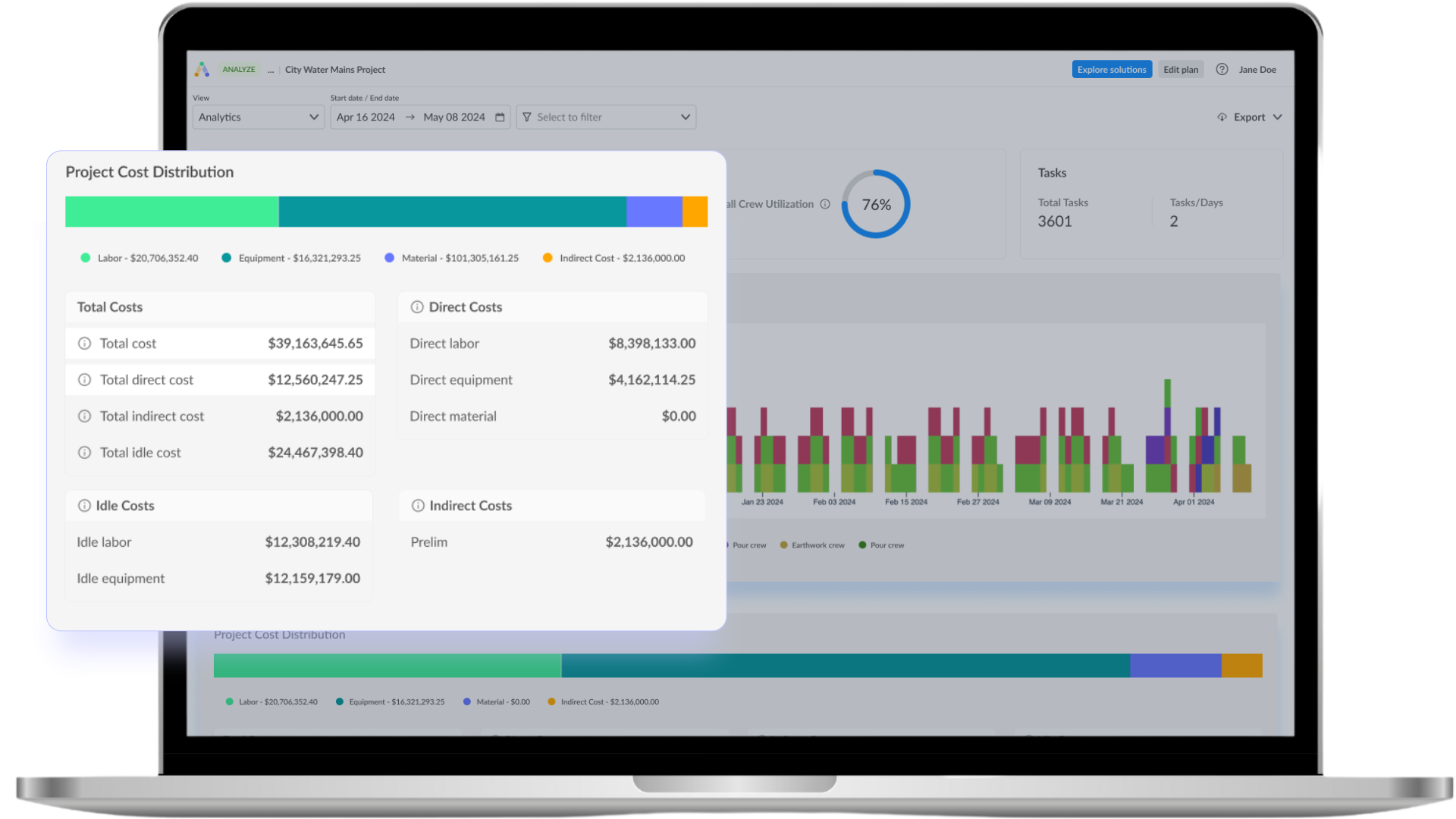

Utilization
Insights
Monitor crew, resource and equipment use across time and tasks

Cost Breakdown Visibility

Time-Phased Cost Analysis
Analyze cost accumulation over time to flag potential risks.

Resource Consumption
Track equipment and material usage throughout the project timeline.
Shareable Reporting Tools
Export charts & reports (pdf, csv, comparison reports) to keep teams aligned.
-1.png?width=1094&height=1080&name=Cranborne%20LinkedIn%20testimonial%202%20(2)-1.png)
"Questions that would’ve taken days to answer — for example, how would a project change if crew size or resources shifted — now take minutes with ALICE."

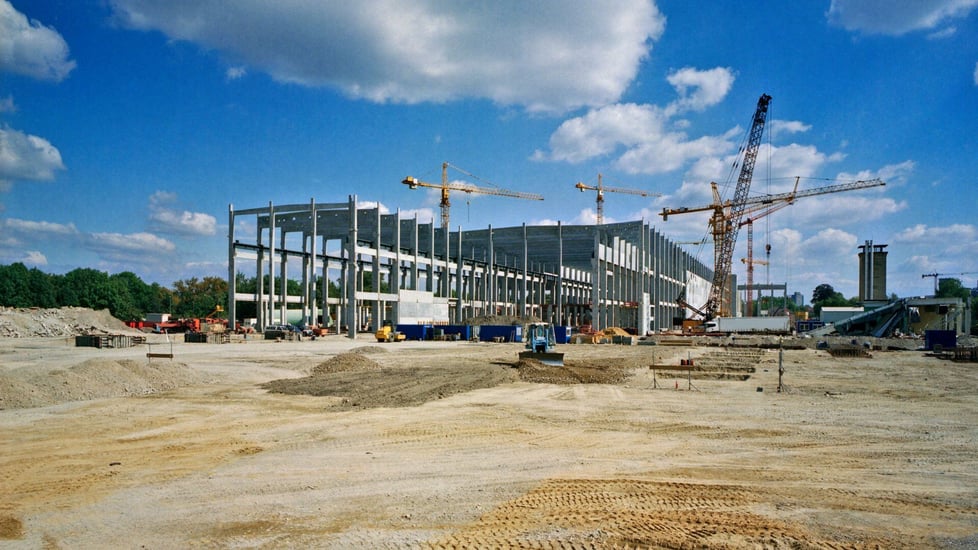
EBOOK
What the Heck is Generative Construction?
We often get asked: What exactly is generative construction scheduling?
This ebook breaks it down—showing how leading owners and contractors are using AI-driven scheduling to save time, reduce costs, and confidently deliver complex capital projects.
-
Key highlights:
- Generative AI in the spotlight
- What is generative design?
- What is generative construction scheduling?
- Construction: many inputs, many outcomes
- Generating scheduling options
- Parameterizing the construction process model
ALICE PRICING
Start here to get your custom quote now
What type of company do you work for?
What is the size of your project?
What are your top priorities?
Which of the following best describes your business model?
What are your top priorities?
What is the construction value of your average project?
We need a bit more information to prepare your custom quote
Almost done! How should we reach out to you?
Tell us more about yourself.
Thanks!
We’ll review the information you submitted and be in touch shortly. In the meantime, check out some of these links if you want to learn more about us.
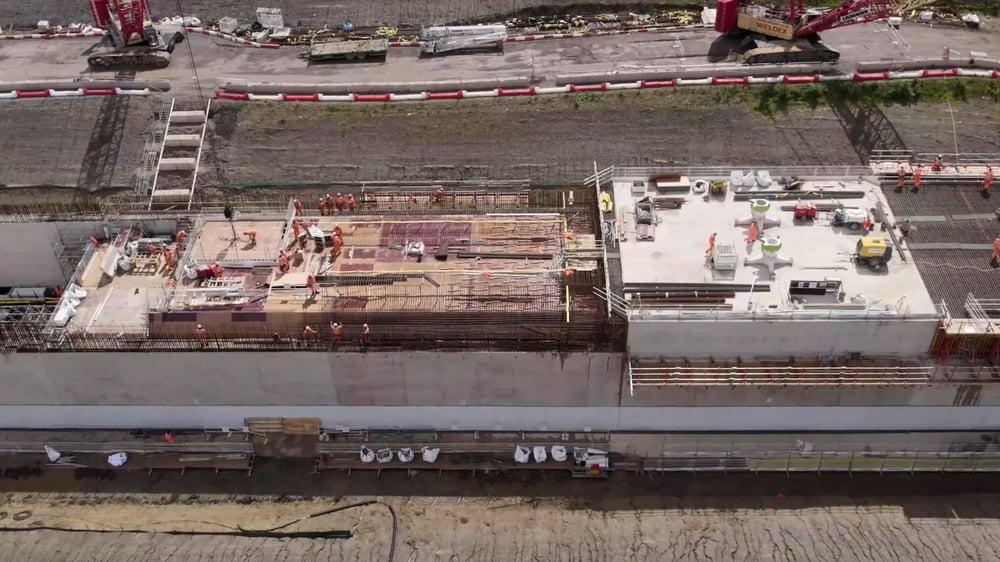
CASE STUDY
SCS JV generates more than three months of float on its Copthall Green Tunnel construction project schedule with ALICE
Learn how SCS JV used ALICE to determine optimal production rates and increase project efficiency on HS2's Copthall Green Tunnels with ALICE.
Optimize every construction phase with ALICE
ALICE gives you new planning and construction super powers.
Construction Simulation
Explore numerous ways to build your project.
Optimization Presets
Fine-tune an ALICE simulation based on your project goals.
Analytics and Reporting
Track and analyze information that matters most to you.
Schedule Insights Agent
"Chat" with your schedule to get insights & recommendations.
DCMA 14-Point Check
ALICE automatically checks and surfaces schedule quality issues.
Resource Management
Automate resource leveling and optimization with ALICE.
Risk Management
De-risk your project by modeling constraints and scenarios with AI.
Construction Sequencing
Solve complex constraints & intelligently sequence activities.
Resources that help you evaluate the best
construction project scheduling software
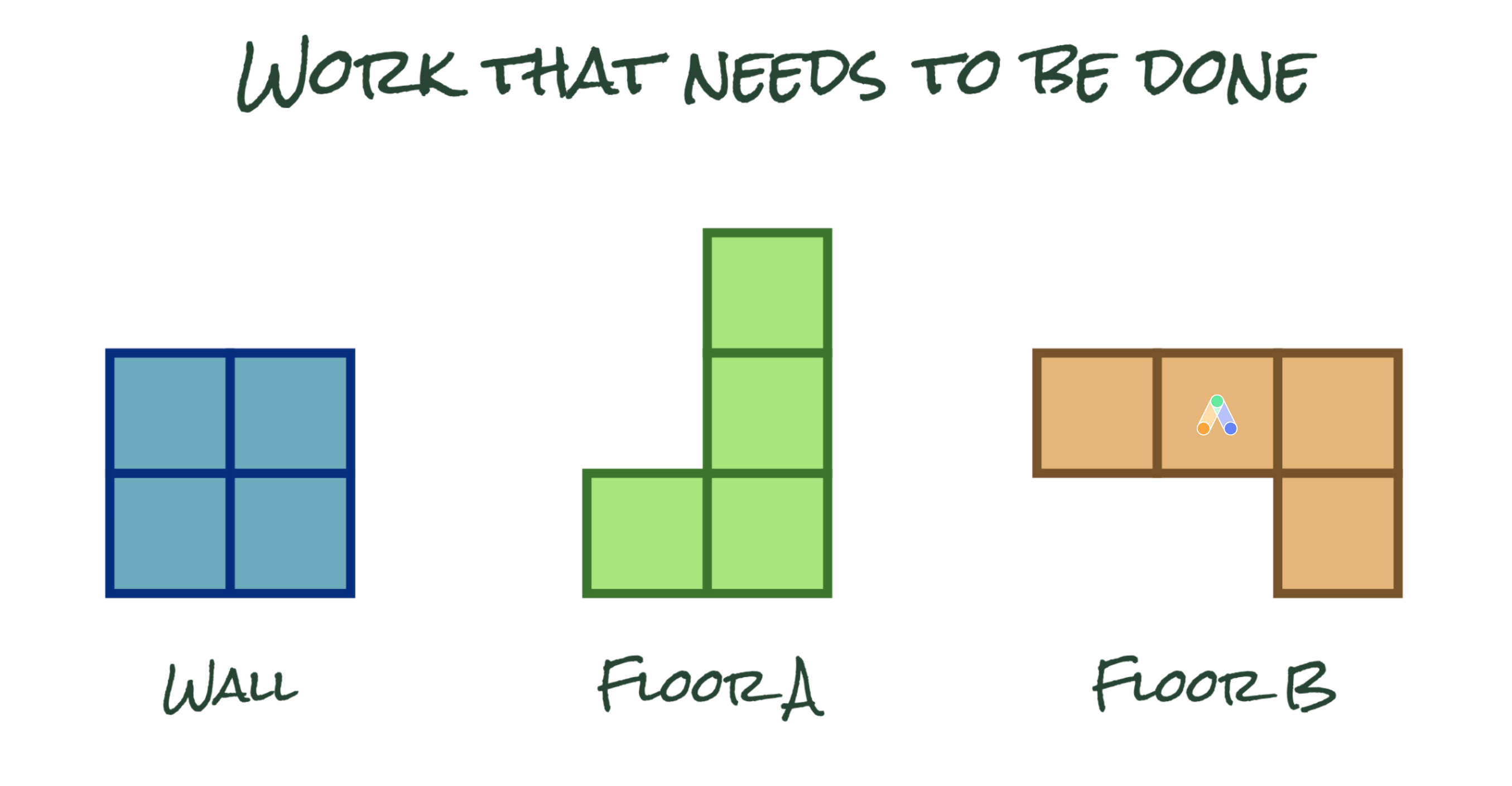
Construction Scheduling Efficiency Explained... with Tetris
So what makes some construction schedules more efficient than others? Tetris can help us illustrate the question.
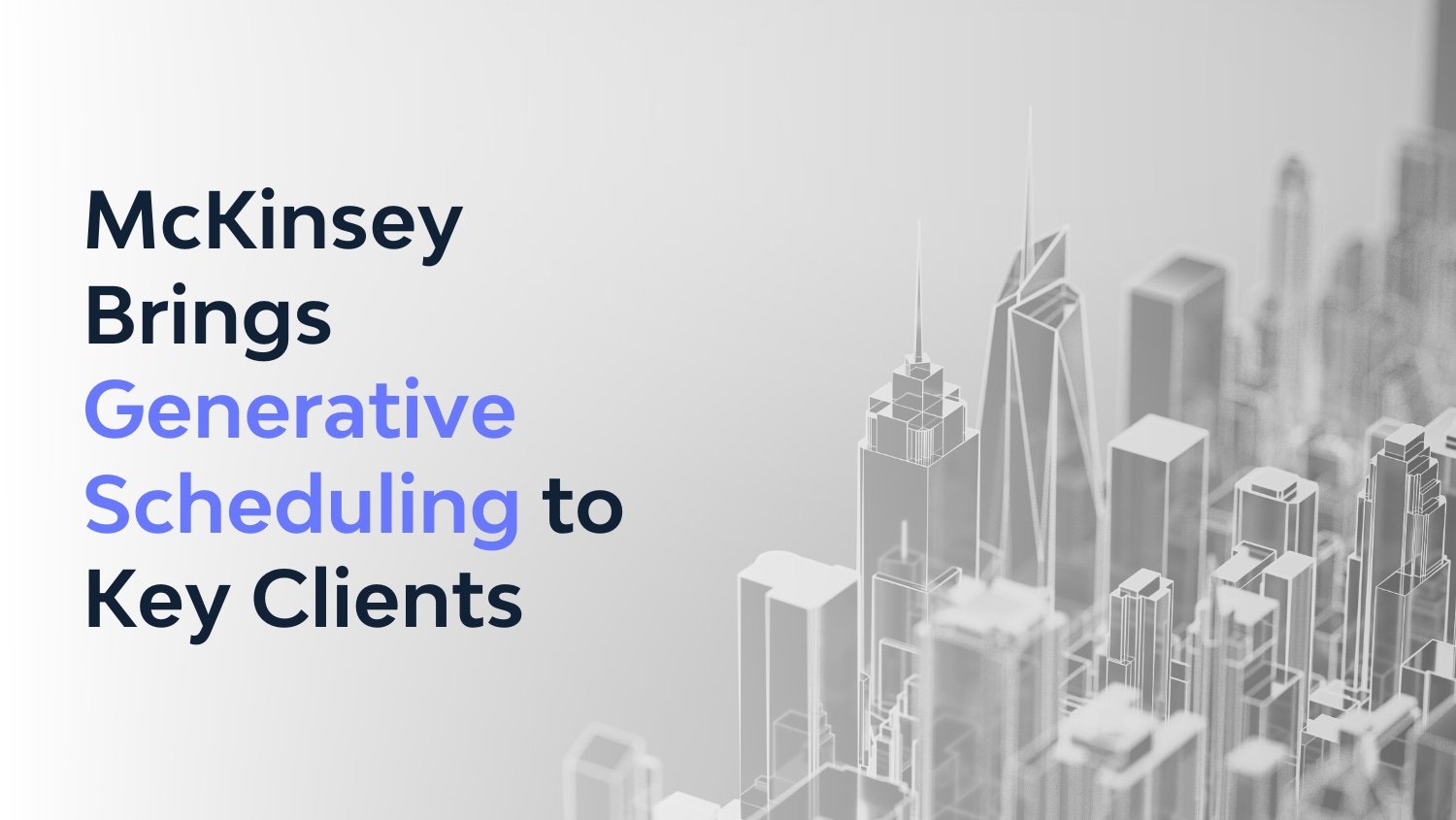
McKinsey Brings Generative Scheduling to Operations Practice Clients
McKinsey is introducing clients of the firm’s Operations practice to the concept of generative construction scheduling, as pioneered by ALICE Technologies.

New AI Tool Brings Construction Scheduling Software Into Modern Era
An experienced project scheduler can spend months mapping out one iteration for a complex construction job. “ALICE” can simulate millions in an afternoon.
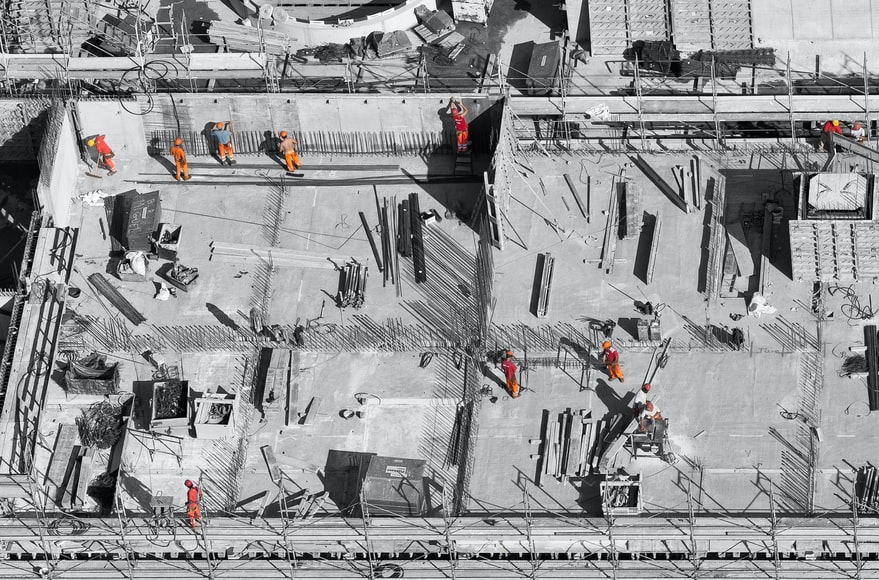
Streamlining Your Construction Scheduling Process With AI Software
Unpack the benefits of AI in the construction industry to streamline your scheduling and boost your productivity
.jpg?width=1440&height=964&name=jonny-caspari-1je5j4aN2RI-unsplash%20(1).jpg)
How to plan and schedule a large construction project
Construction projects with a value higher than $1 billion are inherently complexity and necessitate a different method of action when it comes to planning
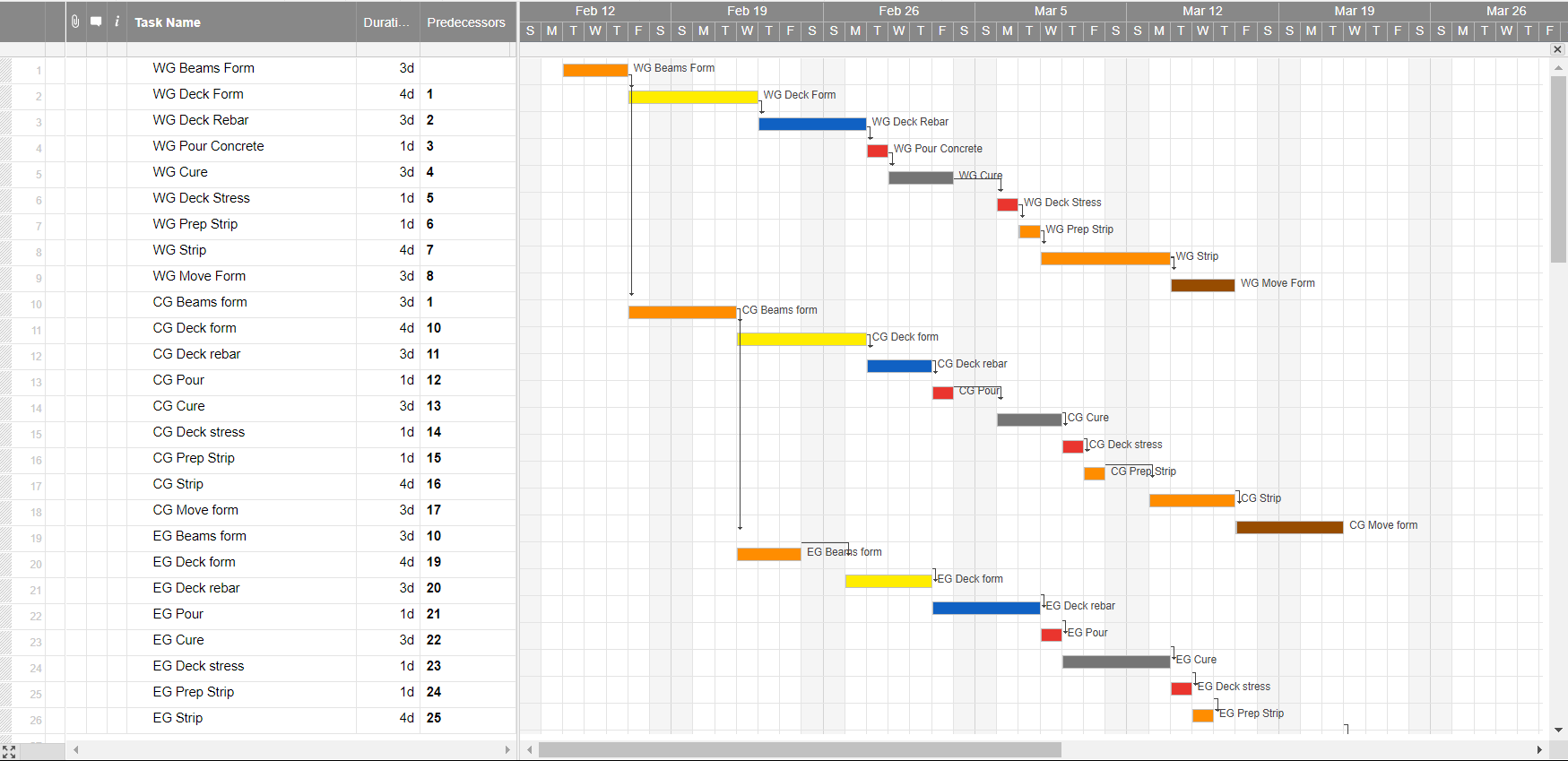
Why is scheduling in construction broken?
Construction scheduling is broken. There are many reasons for this, and the ability to plan and schedule a project lies near the heart of them all.

How to Choose the Best Construction Project Scheduling Method
What are the best construction project scheduling methods and which one is right for you? What are the key benefits of Critical Path Method vs. others?
AI Construction Project Scheduling Software For General Contractors, Owners, Consultants
Frequently Asked Questions
-
Contractors leveraging ALICE's AI-powered construction scheduling software experience significant benefits in project efficiency and cost management. By automating scenario exploration, ALICE enables contractors to swiftly identify the most efficient, cost-effective, and risk-reduced project plans. This proactive approach allows for the anticipation of challenges and the exploration of alternative strategies, leading to an average reduction in construction duration by 17% and labor cost savings of approximately 14%.
Additionally, ALICE's platform facilitates seamless integration with existing schedules, enhancing collaboration among stakeholders and ensuring that all project aspects are aligned. By optimizing resource allocation and sequencing, contractors can minimize delays and improve overall project delivery, ultimately increasing profitability and client satisfaction.
-
ALICE offers an AI-driven construction scheduling platform that enables contractors to plan, optimize, and execute projects with greater efficiency. Its powerful scenario-generation engine allows users to explore multiple scheduling options, identifying the most cost-effective and time-efficient solutions.
Key features include: Optimization, resource management, risk mitigation and more.
-
In construction, a schedule and a timeline both refer to project planning, but they serve different purposes and levels of detail.
Construction Schedule
A construction schedule is a detailed, structured plan that outlines all the tasks, milestones, and dependencies required to complete a project. It includes:
- Task breakdowns (e.g., foundation, framing, plumbing)
- Dependencies (which tasks must be completed before others can begin)
- Resource allocation (labor, materials, equipment)
- Start and completion dates
- Critical path analysis (key activities that impact project duration)
Construction Timeline
A construction timeline is a higher-level overview that represents the sequence of major project phases over time. It typically includes:
- Project phases (e.g., design, permitting, construction, inspection)
- Key milestones (groundbreaking, inspections, completion)
- Estimated time frames for each phase
Key Difference
- A schedule is highly detailed and used for daily project management.
- A timeline provides a broad overview of the project’s major events.
-
Construction scheduling is the process of planning, organizing, and sequencing tasks to ensure a project is completed efficiently, on time, and within budget. It begins with defining project scope, identifying tasks, and establishing dependencies between activities. Project managers use scheduling software to allocate resources, assign responsibilities, and determine timelines. Critical Path Method (CPM) and Gantt charts help visualize task relationships and deadlines. As work progresses, schedules are updated to address delays, optimize workflows, and mitigate risks. Modern AI-powered scheduling tools, like ALICE, enhance this process by automating scenario analysis, reducing project duration, and improving cost efficiency.
-
Yes, construction scheduling software allows you to modify project timelines easily. These tools enable real-time adjustments to accommodate delays, resource availability, or unexpected challenges. By updating task durations, dependencies, and resource allocations, project managers can recalculate schedules instantly. Advanced platforms, such as ALICE, use AI-powered automation to generate optimized alternatives when changes occur. This ensures minimal disruptions while maintaining project efficiency. Features like dynamic rescheduling, critical path adjustments, and real-time collaboration make it easier to keep projects on track. With modern scheduling tools, you can proactively manage changes without compromising deadlines or budgets.
-
Construction scheduling techniques are methods used to plan, sequence, and manage project activities efficiently. The most common techniques include:
- Critical Path Method (CPM): Identifies the longest sequence of dependent tasks to determine project duration.
- Gantt Charts: Visual timelines that show task durations and dependencies.
- Program Evaluation and Review Technique (PERT): Uses probability to estimate project completion time.
- Line of Balance (LOB): Best for repetitive tasks, ensuring workflow continuity.
- Last Planner System (LPS): A lean construction method that improves team collaboration and task commitment.
-
ALICE construction scheduling software is revolutionizing project planning with AI-powered automation that enhances sequencing, resource allocation, and risk management. By exploring multiple schedule scenarios, ALICE enables contractors to identify the most efficient and cost-effective approach. Its dynamic rescheduling feature adapts to real-time changes, preventing costly delays. The platform seamlessly integrates with existing scheduling tools, ensuring better collaboration and transparency across teams. Additionally, predictive analytics help construction managers anticipate potential challenges before they impact progress. With its ability to streamline workflows and enhance decision-making, ALICE empowers construction teams to deliver projects faster and with wider profit margins.
Ready to build smarter, faster, and more efficiently? Let ALICE unlock the full potential of your construction schedules. Optimize your next project with AI-driven precision—schedule a demo today!